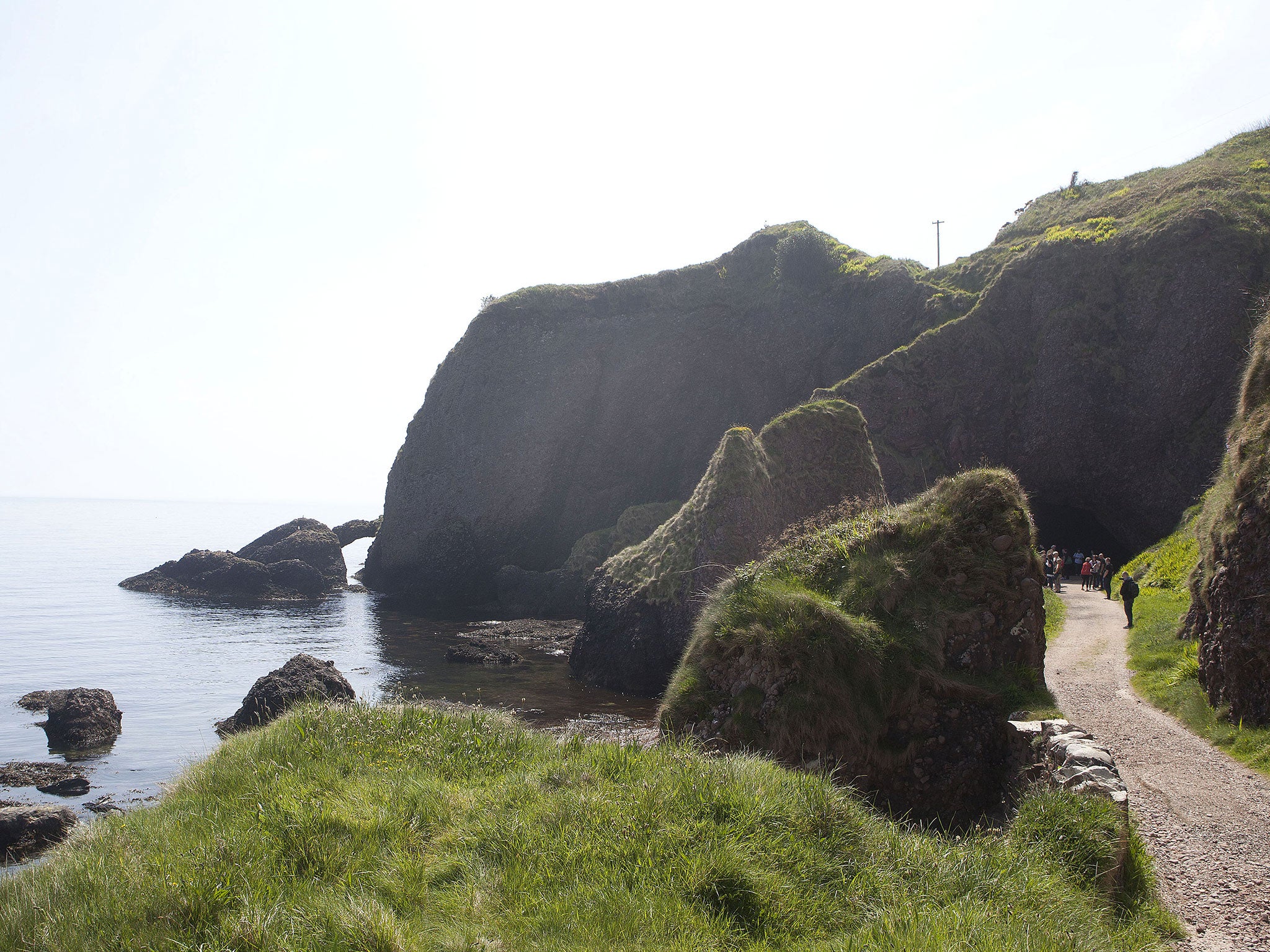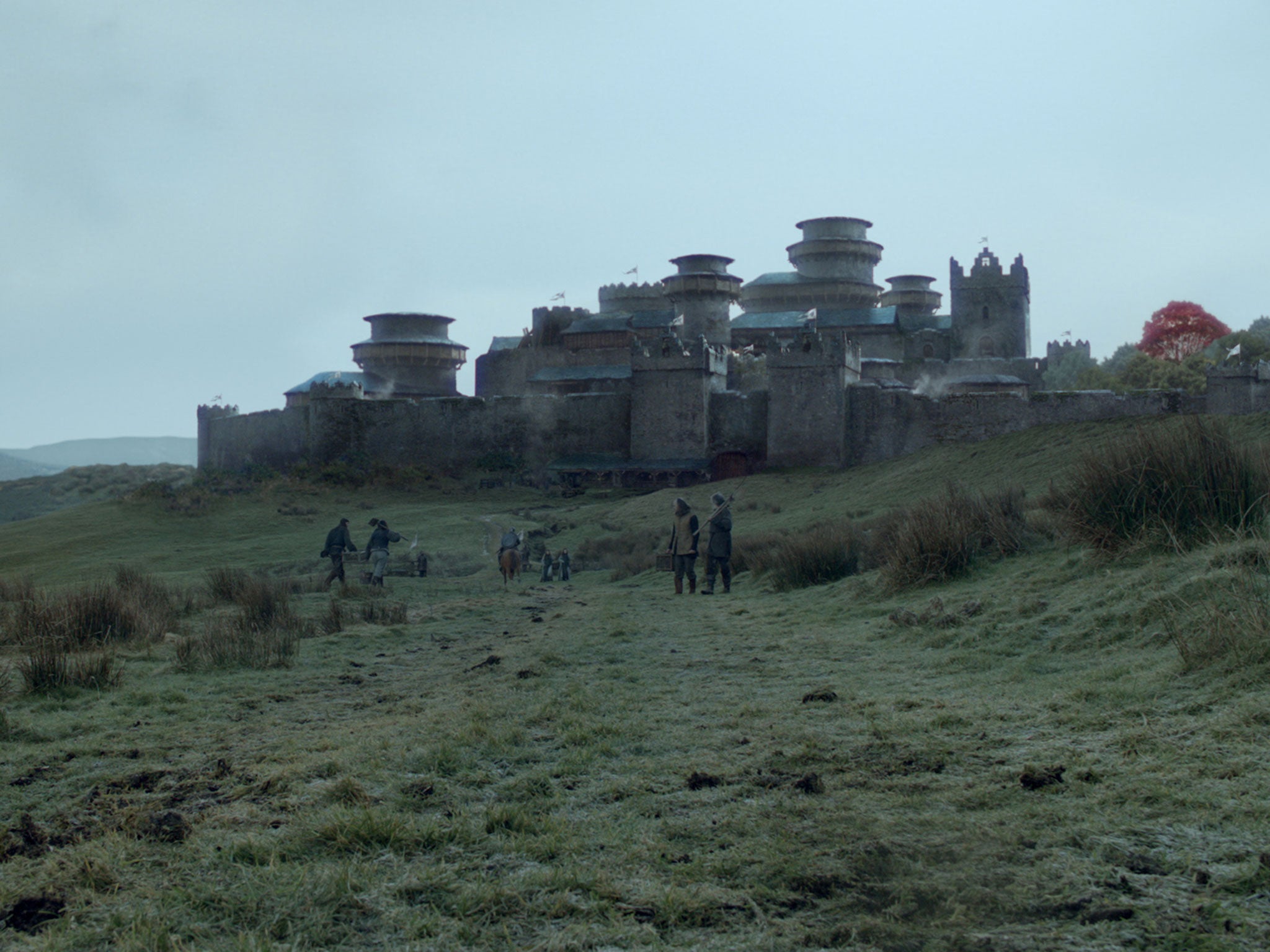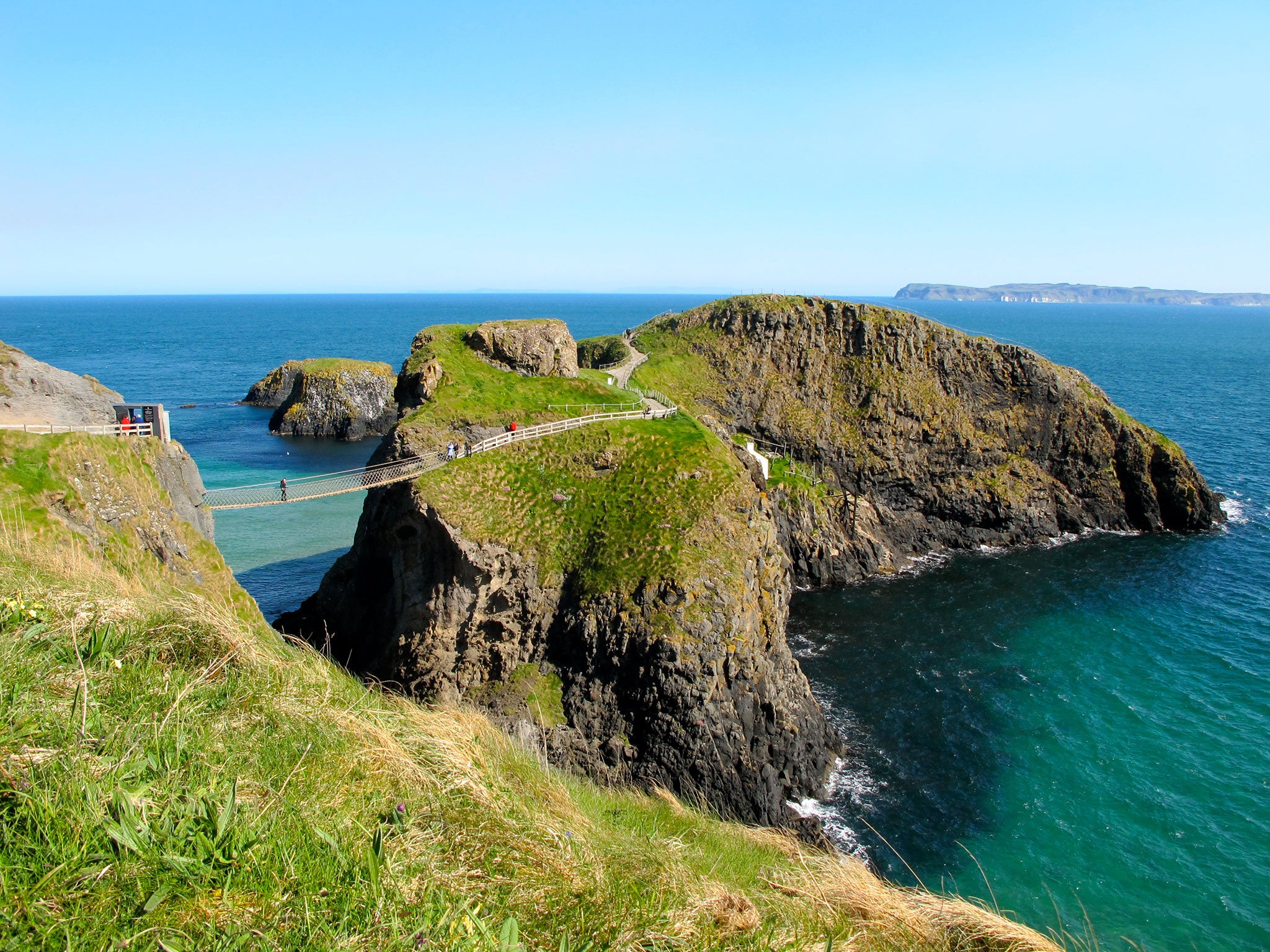Game of Thrones locations: Tourists are flocking to Northern Ireland to see Winterfell and other key settings
Droves of tourists have been flocking to locations seen on the series

On a cold, windy morning, on top of a frost-capped hillside overlooking the sea, a small, shivering group of people gather round a large rock. The ice on the ground crunches as a Chinese tourist wearing a long black cloak with fur trim kneels and stretches her neck toward the rock, as a great sword rises above her head.
Fortunately for Cawei Hua, a 24-year-old visiting from Shanghai, the sword is plastic, the cloak a borrowed prop, and the hillside – in Cairncastle, Northern Ireland – a regular stop on one of the many location tours celebrating the George RR Martin book series that became the HBO fantasy show Game of Thrones. The stone in Cairncastle marks the point where Ned Stark, played by actor Sean Bean, executed a deserter in the show’s first season. In the nearly six years since that scene was shot, the series has become a global phenomenon (its sixth season premieres in the US on 26 April) and Northern Ireland – where the majority of the show’s production takes place – has reaped the rewards.
A popular location on the tours is Cushendun Caves, located below the coastal village of Cushendun and formed over 400 million years by Northern Ireland’s harsh weather. Here, the red sorceress Melisandre, played by Carice van Houten, gives birth to a magic “shadow baby” in the show. The caves are also the only entrance to the local convent, where nuns are probably confused to see tourists regularly re-enact the scene for photos. For Cawei Hua, these tours are a chance to see an often overlooked part of Great Britain while geeking out at the locations of a show she and millions like her watch back in China.
Now we have to consider when we’re filming that people would be very interested in seeing what the plotline might be
Droves of tourists now flock to the country, many to see the locations made famous by Game of Thrones, embarking on eight-hour bus tours that stop off at castles, hills, caves and beaches to grab scenic selfies complete with swords and shields. But the level of fandom has presented the production with challenges. Though the book series by Martin, called collectively A Song of Ice and Fire, has so far dictated what happens in its small-screen adaptation, the show will overtake Martin’s novels in the upcoming season. Keeping the two stories aligned isn’t a problem (Martin has helped write the screen adaptations so that, when he does finish the new books, the two will still basically match), but the fact that the show will now presage the books has sparked even more intrigue among the already obsessive fans, who hunt compulsively for hints, sneak peeks and outright spoilers.
At the height of summer, when the show is being filmed, Robert Boake, Northern Ireland location manager for Game of Thrones, says the crew turns away an increasing number of buses, up to seven per day, all looking to catch a glimpse of future events in Westeros, the fictional country where the show is based. “We have more paparazzi following us around”, says Boake, who adds that “drones are an increasing problem. Now we have to consider when we’re filming that people would be very interested in seeing what the plotline might be. We definitely get followed around more than we used to.”

Northern Ireland might seem like a random place to produce a hit TV show, but for the Game of Thrones creators, who needed passably medieval settlements and sweeping landscapes, the country was well-equipped and easy to access. It also didn’t hurt that Martin based many of the novel’s geographical descriptions on places in the United Kingdom.
For a small country, or province, landing the production for a huge hit can be a windfall. The most famous example of the magic of movies on a nation’s gross domestic product was Peter Jackson’s wildly successful Lord of the Rings trilogy (and the subsequent Hobbit trilogy), which made New Zealand the fantasy landscape de rigueur. In the year leading up to September 2001, three months before the release of The Fellowship of the Ring (the first film in the initial trilogy), New Zealand reported earnings of $5.3bn (£3.7bn) from international visitors.
In the year before March 2014, the country earned $10.3bn from tourists. Though it’s hard to measure whether that increase was directly related to Lord of the Rings, according to Forbes, at least 80 per cent of tourists there understood that the two trilogies were filmed in the country, even if it wasn’t the only reason they cited for visiting. That’s not to mention the amount spent by productions – both Lord of the Rings and those that came after – on New Zealand’s small businesses.
Eight years ago, Northern Ireland made a gamble on Game of Thrones having the same effect on its GDP. Northern Ireland Screen, a government-backed agency that aims to boost the amount of film, television and digital content produced there, first met with HBO in 2008 to discuss Game of Thrones. To incentivise the network to anchor production of the series in the six counties, Northern Ireland Screen ultimately footed the $4.6m bill for production of the pilot and first season.

Watch Apple TV+ free for 7 day
New subscribers only. £8.99/mo. after free trial. Plan auto-renews until cancelled.
ADVERTISEMENT. If you sign up to this service we will earn commission. This revenue helps to fund journalism across The Independent.

Watch Apple TV+ free for 7 day
New subscribers only. £8.99/mo. after free trial. Plan auto-renews until cancelled.
ADVERTISEMENT. If you sign up to this service we will earn commission. This revenue helps to fund journalism across The Independent.
The investment alone returned about $30m worth of expenditure on goods and services back into the local economy. By the end of the fifth season, Northern Ireland Screen had invested a total of $17.6m in the show, with a return of $162m spent by HBO cast and crew on hotels, transport and other production costs.
Those figures don’t include the money generated by tourism. Although the financial impact of Game of Thrones is not documented by Northern Ireland’s tourism organisations, the large number of tour companies that have started operating since the show premiered (none of which are affiliated with HBO) is a good indicator of its effect on the industry. Many visitors go to Ballintoy, a small fishing town on the north coast, where the show’s Iron Islands scenes are filmed, or to Carnlough Harbour, where the actress Maisie Williams (Arya Stark on the show) was recently spotted filming scenes for the sixth season. Some tours, like the Thrones and Stones group, also take in some of the country’s tourist attractions yet to be featured in the show, such as Giant’s Causeway, where basalt columns rise out of the sea at the bottom of spectacular cliff faces, and Carrick-a-Rede Rope Bridge, suspended hundreds of feet above the sea.
More than just benefiting the tourist trade, the show has also created opportunities for existing film talent, leading to the emergence of new filmmakers and writers. Northern Ireland Screen credits Game of Thrones with instilling enough confidence in potential investors to build two new film and television sound stages in Belfast. And, as a result of the show’s success, more production projects have come to Northern Ireland, such as the Universal Pictures horror movie Dracula Untold and the BBC’s serial killer drama The Fall.

It wasn’t always so appealing. Northern Ireland Screen’s Richard Williams recalls a time before Game of Thrones, when his organisation would go to LA and London to drum up interest in filming in the country. “In LA, we got a total blank. In London, maybe not a total blank but not exactly a joyous reception”, he says. “If the people we’re talking to now know nothing else, they know that Game of Thrones is anchored in Northern Ireland. That gives us a credibility platform that wasn’t there before.”
“The Game of Thrones machine is much, much bigger than it was back in the beginning”, says Boake. “The production size, the scale of what we’re doing and the level of ambition every year have definitely increased.” Boake’s locations team has grown from five people eight years ago to 20 now. “You’ll see more cranes than ever before – more trailers, trucks, people, horses, marquees.”
Two more books in A Song of Ice and Fire are yet to be released. HBO has guaranteed Game of Thrones for another two seasons - its creators have said they don’t see it continuing far beyond that - yet one of the quarries in Northern Ireland that the show uses regularly for shooting has reportedly been leased for 15 years. It looks like this seam can be mined for quite some time.
© IBT Media Inc
Join our commenting forum
Join thought-provoking conversations, follow other Independent readers and see their replies
Comments